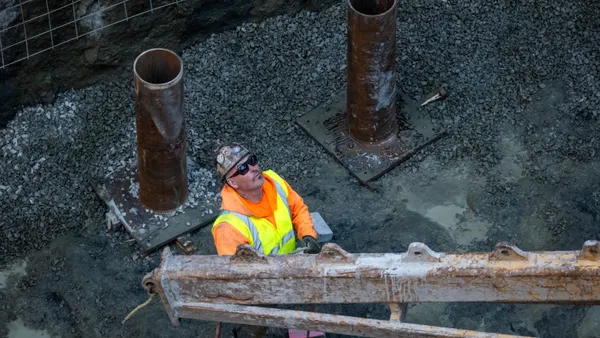Dive Brief:
-
The gap between wage growth and rent increases has gotten so big that a person earning a full-time, minimum wage income can’t afford to rent a two-bedroom apartment anywhere in the U.S., The Washington Post reported, citing a new report from the National Low Income Housing Coalition.
-
Affordability for a one-bedroom apartment is only marginally better, with full-time minimum wage earners able to afford that space in only 12 counties across Arizona, Oregon and Washington.
-
U.S. renters earn an hourly average of $16.38. Workers need to earn $21.21 an hour — just under three times the federal minimum wage — to afford a two-bedroom rental and $17.14 hourly to afford a one-bedroom rental.
Dive Insight:
Rent growth is slowing in some of the country’s hottest markets, but how that trend will impact affordability for low- and middle-income renters remains to be seen. The latest Beracha, Hardin & Johnson Buy vs. Rent Index noted that one result of the slowdown could be that entry-level buyers remain renters for the time being, as home prices continue to climb, which could prevent rent growth from slowing further.
According to Zumper, the national median rent for a one-bedroom apartment held steady from May to June at $1,169. Median rent for a two-bedroom unit rose 0.2% to $1,392 for the period.
An infusion of rental housing priced to be affordable to low- and middle-income households is perhaps the most direct solution to this group's affordability woes. And some cities and states are making definitive steps in that direction.
Earlier this month, California state senators passed a set of bills that would establish a $3 billion affordable housing bond and streamline project approvals for developers who want to bring affordable multifamily projects to high-density areas that lack sufficient housing. The goal is to make it easier to approve — or restrict — such development in a state that has turned out 100,000 fewer homes annually than it has needed over the past decade.
Meanwhile, the San Francisco Board of Supervisors last month approved the city’s new Affordable Housing Bonus Program, which gives a developer up to two extra floors of space if it prices its condos between 90% and 140% of the AMI and apartments between 55% and 110%.
In New York, Gov. Andrew Cuomo last month rolled out a five-year, $20-billion plan to improve the state’s supply of affordable housing. Among its provisions is the construction and maintenance of 110,000-plus affordable housing units and 6,000 new supportive housing units. Some of these units will be part of the state’s 421-a revival, Affordable New York, which offers developers a tax break for adding more affordable units to certain projects in areas of Manhattan, Brooklyn and Queens.














